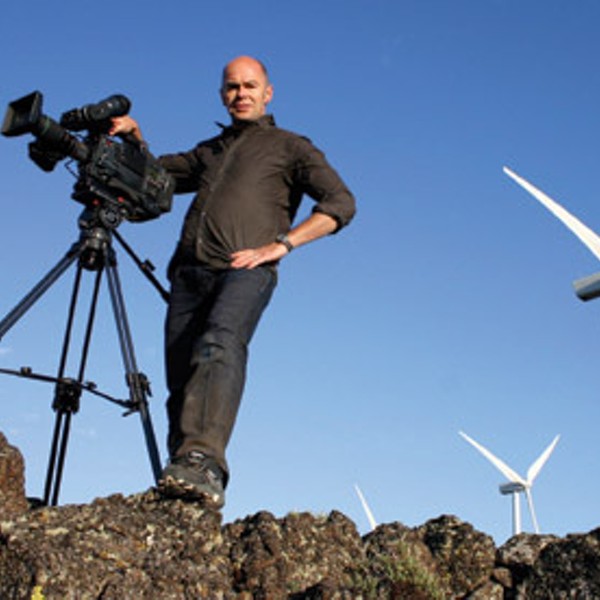Gail Godwin’s reputation as formidable—in multiple connotations—came to mind in 2004 when Chronogram assigned me to profile the writer and she invited me to her Woodstock home. To prepare, I read roughly a third of this bestselling novelist’s output (nearly two dozen books), studying the pages for lessons in gentility, a favored Godwin motif.
Falling sick, my subject rescheduled our visit. On the newly appointed day, she graciously answered my knock, despite repressing sniffles. I proffered hostess gifts, explaining, “For your cold.”
In her sun-splashed kitchen, Godwin opened the first parcel. “Lapsang souchong tea!” she gushed. “Mother’s favorite! How did you know?” Seeming not to hear my reply—“From your fiction, of course”—she next uncovered a tray of cucumber sandwiches. I apologized for lack of watercress, the recipe otherwise lifted straight from Godwin’s A Mother and Two Daughters (1982). Disarmed, the author granted a two-hour interview.
Pauline Uchmanowicz is the author of Sand and Traffic (Codhill Press, 2006).
When I was acting in New York, I went to an address where Maria Irene Fornes was holding auditions for her new play. I was impossibly young for the role, but I couldn’t pass up the chance to get my picture-and-rez in her files. She was reading people in her Lower East Side apartment. At the appointed time, I knocked. There was no answer, but I smelled smoke. The door was ajar. I went in. When Ms. Fornes returned with her sandwich, I was dousing a pot that had been burning on her stove in a kitchen now as full of steam as smoke. I didn’t get the part, but the next year, in other people’s plays that she produced, she cast me twice.
Amlin Gray is the Obie-winning author of How I Got That Story.
Frank Pierson, the author of Dog Day Afternoon, directed my cable television film, Soldier’s Girl. Both films feature transgender characters and ours required actor Lee Pace to wear false breasts. Frank—famous for his love of beautiful women—supervised the building and testing of the prosthesis, criticizing early attempts for being too stiff or too much like Jell-O. At one point during a test run he said, “That reminds me of a story about Marlene Dietrich’s nipples.” And he told me a story about Dietrich’s controversially pointed nipples as they appeared in the shimmering gown she wore for her concert comeback in the 1960s. The source of those points? Peanut shells. Frank refused to say how he had learned the secret, but his smile suggested a pleasant hour backstage with Marlene between shows.
Ron Nyswaner was nominated for an Academy Award for his screenplay Philadelphia, and won the National Board of Review Award for The Painted Veil.
I saw Joyce Carol Oates at Ulster County Community College in 2004. She had giant eyes, a receding chin, suspiciously brown hair with reddish highlights. Her face slightly resembled James Baldwin’s.
Joyce grew up near Niagara Falls, she explained, and was familiar with towns like Horseheads, New York—“which you probably never heard of.” After she finished autographing books, I approached her in the reception room. “May I tell you something?,” I asked. “Yes,” she answered, looking frightened. “I went to Cornell University, and I made a vow that I would only listen to country and western music,” I said. “The radio station I listened to was in Horseheads, New York.”
She looked mystified. Perhaps she had forgotten mentioning Horseheads. “Do you like bluegrass, also?” she asked, shyly. “I didn’t really like country and western music,” I answered. “I only listened because I made my vow.” Joyce Carol Oates looked disappointed.
Sparrow is the author of America, a Prophecy. His poetry and his articles have appeared in the New Yorker, the Sun, the New York Times, and other publications.
As a mystery writer, I’ve been to a lot of mystery writers conferences. When they’re at conferences, most mystery writers like to drink. At one such conference, in Madison, Wisconsin, I had the honor of meeting Ken Bruen, the critically acclaimed Irish noir writer. Bruen is very thin and silver-haired, with sharp, intense features and a penetrating gaze. His prose is dark and soulful, and I expected his personality to be the same—a sort of crime-fiction James Joyce. We were introduced by my friend Jason Starr, who has collaborated with Bruen on the novels Bust and Slide. We ran into each other at a bar (of course). Someone shouted, “Let’s go to another bar!” and Bruen said, “Yes!” And so we did.














